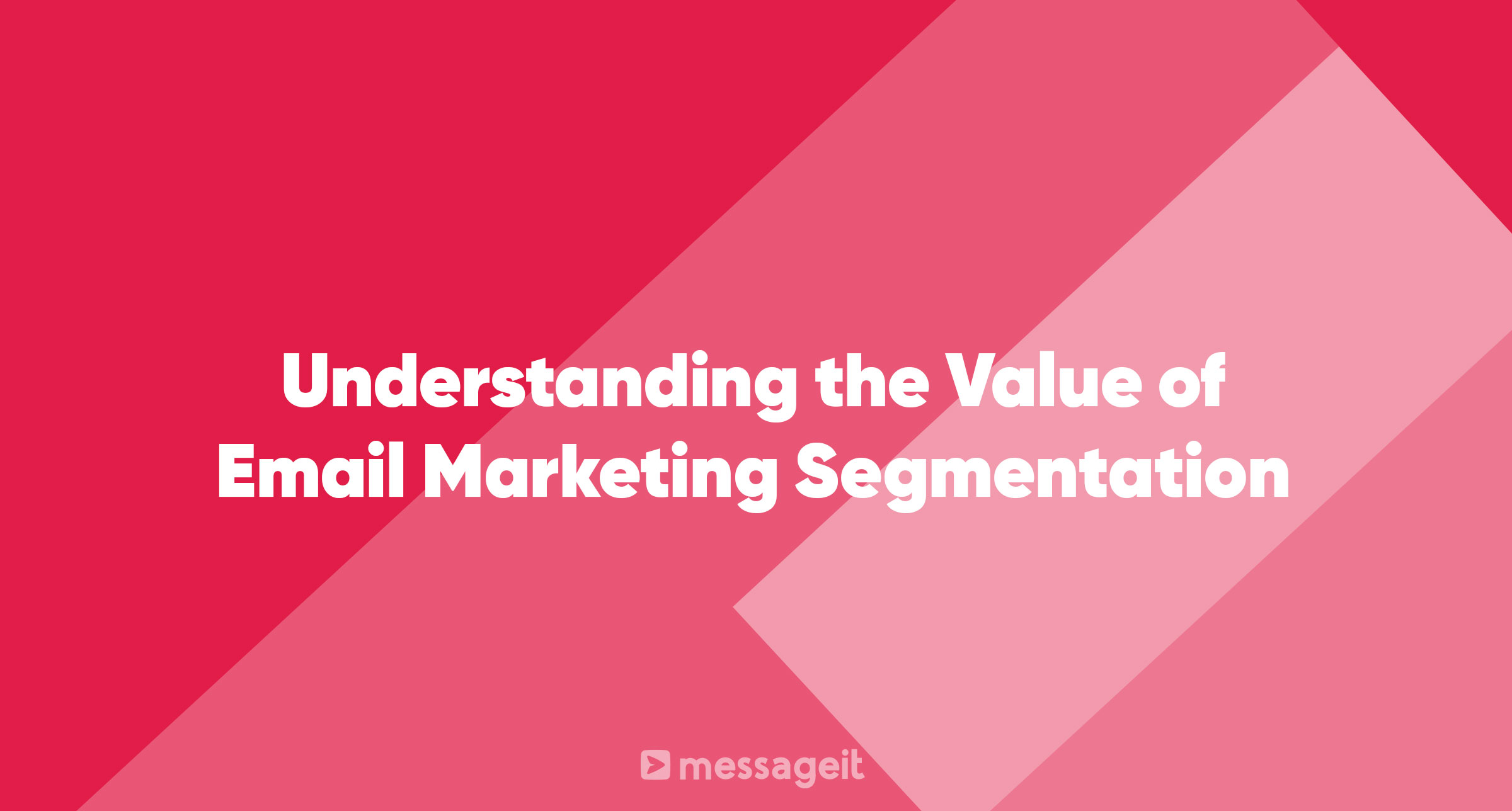In the world of digital communication, email marketing has emerged as a robust tool for businesses to reach their target audience. However, when every inbox is inundated with a barrage of emails, standing out from the crowd becomes a daunting challenge. The solution lies in efficient email marketing segmentation. Segmentation is the process of dividing your email list into smaller, more focused groups based on specific criteria, thereby enabling you to deliver more personalized and relevant content to your subscribers.
The Concept of Email Marketing Segmentation
Email marketing segmentation refers to the division of email subscribers into smaller, targeted groups based on set criteria. These could include geographic location, interests, purchase history, and more. The objective behind segmentation is to create personalized and relevant email marketing campaigns that resonate with subscribers, resulting in higher engagement and better conversion rates.
Why is Segmenting Crucial in Email Marketing?
Segmentation in email marketing is vital for several reasons. Firstly, it allows businesses to send out more relevant and targeted communication to the subscribers, which can enhance engagement rates and drive conversions. It provides a deep understanding of the subscribers' needs and interests, enabling businesses to tailor their products and services accordingly. Importantly, segmentation also allows businesses to focus on subscribers genuinely interested in their content, thereby reducing the tendency to send irrelevant messages.
Segmentation Based on Demographics
Demographic segmentation is an effective way to start email list segmentation. It involves dividing your list based on characteristics such as age, gender, location, income, and education level. This form of segmentation can assist in creating targeted messaging that directly caters to the needs of a particular group of people.
Behavioral Email Segmentation
Another powerful method of segmenting your email list is through behavioral segmentation. This involves analysing customer actions, such as website behavior, past purchases, or email engagement to create targeted groups for your email campaigns. By segmenting based on behavior, you can send more relevant and personalized email messages, resulting in enhanced engagement and conversions.
Personalization through Segmentation
Personalization is a significant aspect of effective email marketing, and segmentation serves as a potent tool to achieve it. By creating segments based on specific characteristics or behaviors, you can tailor your email content to meet the needs and interests of your subscribers. This can help you build stronger relationships with your subscribers, increase engagement rates, and ultimately improve your conversions.
The Impact of Targeted Email Campaigns
Targeted email campaigns, facilitated by segmentation, offer a range of benefits. They improve the overall quality of your email list by ensuring the right messages reach the right people. They also help build stronger relationships with subscribers by providing personalized and relevant messages. Furthermore, targeted email campaigns can help you achieve specific marketing goals, such as increasing sales or promoting new products.
Enhancing ROI with Email Segmentation
Email segmentation can significantly improve the ROI of your email marketing campaigns. By leveraging segmentation to send more targeted and personalized messages to your subscribers, you can improve engagement rates and drive more conversions. Additionally, segmentation can help reduce your email marketing costs by allowing you to focus on a smaller, more interested group of subscribers.
Best Practices for Effective Email Segmentation
For effective email segmentation, it's crucial to follow best practices. Define your goals, gather the right data, use segmentation tools, test and refine your segments, and monitor and analyze your results. By adhering to these best practices, you can create effective email segments that allow you to send more targeted and personalized email campaigns, resulting in improved engagement rates and increased conversions.
Powerful Tools for Email Segmentation
Numerous tools and resources are available to assist with email segmentation. Email marketing platforms such as Mailchimp, Constant Contact, and Campaign Monitor offer built-in segmentation tools, while customer relationship management (CRM) software, analytics tools, and data management tools can also provide valuable insights for segmentation. Utilizing these tools and resources can simplify the process of email segmentation, making your campaigns more effective and efficient.
The Final Word
In conclusion, segmentation is a critical component of any successful email marketing campaign. By delivering more targeted and personalized content, businesses can not only improve their engagement rates but also drive more conversions, enhancing the overall ROI of their email marketing campaigns. With the right tools, best practices, and a thorough understanding of your subscribers, segmentation can take your email marketing to new heights.
Remember, the importance of segmentation in email marketing cannot be overstated. It's not just about sending emails; it's about sending the right message to the right person at the right time. So, start segmenting your email list today and experience the power of personalized communication.
